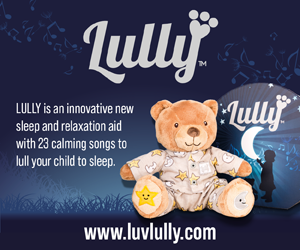
What are the key benefits of breastfeeding for mums?
Breastfeeding is very important for mother and baby. If you put your baby straight to the breast after birth, it will help your uterus to contract and speed up delivery of the placenta. Skin-to-skin contact straight after birth not only creates a lasting bond with your baby, it helps baby latch onto the breast and encourages the release of oxytocin. This sends a signal to your breasts to release the milk, which prevents engorgement setting in.
Breastfeeding offers mums some protection against:
- Premenopausal breast cancer
- Developing type II diabetes in the longer term
- Ovarian cancer—curiously, if you develop mastitis, your body produces factors which appear to reduce your risk of developing ovarian cancer
- Osteoporosis in later life—for every 10 cumulative months of breastfeeding, the risk of osteoporosis is reduced by as much as 12 percent
- Hormones of lactation, oxytocin and prolactin have an overall calming effect on mum—as you relax during a breastfeeding session (even your blood pressure falls)
Studies also suggest that these hormones reduce the risk of postnatal anxiety and depression in breastfeeding women, compared to mothers who are bottle-feeding.
Another benefit for mums is that breastfeeding helps to mobilize fat stores and burns up to 500 calories a day, to help you lose pregnancy pounds faster. A bottle-feeding mum would need to cycle uphill for an hour to use up as many calories!
How do newborn babies benefit from being nourished through breast milk?
Your breastmilk is the only food designed specifically for your baby. Your first milk (colostrum) may be small in quantity, but it is rich in everything he needs. Colostrum and breastmilk cannot be replicated with formula milks. It changes as he grows, to suit his needs.
Moreover, the nutrients in breastmilk are more easily absorbed than formula milk, so you can be certain that your baby is getting maximum benefit. Your baby is also protected by the antibodies that you produce just for them in response to what you are both exposed to and pass on through your milk.
There are both short and long-term benefits for your baby if you breastfeed exclusively for the recommended time of six months, and thereafter together with solid foods for as long as you and your baby wish. Breastmilk never loses its health-giving properties. Many of the so-called benefits of breastfeeding are dose-dependent—the longer your baby is breastfed, the greater the benefits.
There are many ways in which breastfed babies will be healthier:
- Breastfed babies have fewer and less severe upper and lower respiratory tract infections; they are less likely to need hospitalization
- Ear infections are three to four times more common in infants who are not breastfed
- Breastmilk has factors that protect against urinary tract infections
- Babies who are not breastfed are more likely to suffer from diarrhoea and gastroenteritis. Their feeds lack the protective factors in breastmilk and are more easily contaminated during preparation and storage
- Constipation is much more common in formula-fed infants than breastfed infants, whose stools are typically soft and sweeter smelling
- Symptomatic gastro-oesophageal reflux is more common in formula-fed infants because stomach-emptying is slower and there is an increased risk of allergic reaction irritating the oesophagus
- Breastfed babies respond better to vaccines, as their immune system is more mature
- Breastfeeding is protective against SIDS (especially exclusive breastfeeding)
- Breastmilk contains vital substances to help the development of your baby
- Stem cells in breastmilk are thought to play a role in normal growth and development and may have an important functional role later in life.
Your colostrum and breastmilk are very important in establishing a healthy microbiome in your baby normal grois now thought that the healthy bacteria established in the gut through exclusive breastfeeding may mediate many of the lifelong health advantages, which result from being breastfed as an infant.
How you feed your baby now, may potentially be protecting him from intestinal inflammation, obesity, and other diseases later in life.
Studies have indicated that children who are breastfed for longer periods in infancy have:
- Fewer chest infections until at least the age of seven
- Less risk of developing eczema and asthma
- A lower risk of developing obesity in childhood and in later life—the longer the duration of breastfeeding, the lower the risk
- The best chance of achieving their full brain potential, including higher scores in intelligence tests
- A decreased risk of developing childhood cancer
- Greater bone mineral density at age eight and 17 years—this has the potential to delay or prevent osteoporosis in later life
- The proportion of children with optimal fine and gross motor skills, language and personal/social skills increases as the duration of breastfeeding increases
- Children who were breastfed for longer periods in infancy have higher intelligence than those who are breastfed for shorter periods, or not breastfed. This inequality persists through to later in life. There are factors in human milk that are thought to mediate this but they cannot be replicated in formula milks.
Breastfeeding & premature babies
If your baby is born prematurely, his immune system will be immature and his brain and other organs will be less developed than those of a full-term baby. Your milk is even more important—it is like an essential medicine that only you can provide for your baby.
It will help build up his strength and protect him from infection, especially the gut infections that can be so serious for premature babies.
Why are some mothers put off by the idea of breastfeeding?
One of the main concerns for mums is whether they are producing enough milk.
Your first milk, colostrum, comes in very small quantities; an average of 37 millilitres over the first 24 hours, gradually increasing daily as the baby suckles more.
When your full-term milk comes in, his tummy grows to accommodate the greater amounts (about 500ml every 24 hours, rising to about 750mls every 24 hours by three months).
Is reluctance to breastfeed in part due to influential cultural factors and outlooks?
A government study found that although 72 percent of the British public outwardly support public breastfeeding, over half of breastfeeding mums take steps to cover up, and 34 percent feel embarrassed and uncomfortable.
Research carried out by Lansinoh, amongst 1,000 people, found that people find women breastfeeding on a bus uncomfortable (37 percent of men and 41 percent of women). 34 percent of men and 44 percent of women frowned upon mums breastfeeding on the underground.
What feeding options are available for mothers that must be apart from their newborn for short periods of time?
Breastfeeding is a 24/7 job but of course, in reality, this is a very hard expectation to live up to. Mums want the best for their baby, but the practical implications of breastfeeding can be tough to maintain. Going back to work, going out for the day with the family or having a couple of hours to yourself—there are ways you can take the worrying out of breastfeeding.
Mothers can express their breast milk using a breast pump and store it for feeding, either in milk storage bottles or milk storage bags. There are generally three types of pump available:
- Manual pumps—hand pumps are affordable, quiet, small and light, making them perfect travelling companions.
- Single electric breast pumps—electric pumps are quicker at expressing breast milk than manual pumps. They can also enable you to tailor your comfort levels, which will help to increase your milk production.
- Double electric breast pumps—double pumps are the quickest and most effective breast pumps. With all the benefits of using a single electric pump, a double electric breast pump allows you to express both breasts at once, making your overall pumping-time quicker. A double electric breast pump can also be used as a single electric breast pump if desired, and may offer a choice of effective pumping styles that can be tailored for your comfort.
Top Tip! When placing your milk in the fridge, place it in the coldest part of the fridge—not in the door—to stop it from spoiling.
Another option is to pump directly into storage bags, which can then be placed straight into the fridge or the freezer.
How does a breast pump work exactly?
Breastfeeding is recommended for the first six months after birth. Once breastfeeding is well established in the days, weeks or months after baby is born (the timeframe varies of course for each of us), you may choose to express and have a supply of breastmilk always on hand for whenever your partner or caregiver need to feed your baby and you are not there.
Expressing will help to empty and stimulate your breast to make more milk. Express after your baby has had a breastfeed. To start with, you may not get much milk, but persevere—your body needs time to adjust to the increased demand.
You will need to express from both breasts even though baby may not have fed from both. Using a 2-in-1 double electric breast pump will help you to stimulate your breasts and increase your supply.
Breast pumps usually have two separate phases:
- Phase one (let-down): is a rapid suction to stimulate and initiate milk flow
- Phase two (expression): slower, deeper suction to maximise milk flow
Here are a few more tips to help mums pump successfully:
- One of the most important things you need to do is to keep yourself hydrated, have a glass of water before you start pumping and another next to you whilst you pump
- Some things that can help encourage your milk flow are having a picture of your baby nearby, keeping something which smells of your baby for example, a blanket from their Moses basket and hearing your baby
- There are products that can help too, for example microwavable hot or cold breast therapy packs that can be positioned around your pump to help initiate milk flow
- Pump first thing in the morning—this is when you will have the most milk supply
- If your nipples become sore whilst you are pumping, use a HPA Lanolin cream to soothe your nipples after pumping. Also, make sure that your nipple is in the centre of the funnel to reduce soreness
- You should pump until your milk flow slows down and then switch to the other breast
What five tips would you give to new mothers that struggle to get their child to latch?
Skin-to-skin bonding straight after birth will encourage your baby to latch. If you and your baby are well, you will be encouraged to breastfeed as soon as possible as his sucking reflex is strongest soon after birth. Signs to look for in a good latch:
- His chin is touching your breast and he has a large mouthful of breast
- It is not hurting you (beyond a tenderness during the initial sucks)
- If the areola is visible, you can see more of it above your baby than below
- His cheeks stay round while sucking
- He comes off the breast on his own when he is finished
If you have flat or inverted nipples, latch assist products can help breastfeeding by gently drawing out a flat or inverted nipple so your baby can achieve a good latch and feed comfortably and successfully.
Are there any challenges presented by breastfeeding that mothers should be aware of?
Breastfeeding can occasionally cause some discomfort. However, in most cases, if addressed straight away, it can be easily prevented.
- Leaking milk from the breasts—a natural occurrence that isn’t pain related but simply rather inconvenient and very easily fixed. Disposable nursing pads are a comfortable, discreet method for absorbing excess milk and ensure that breastfeeding mums stay dry, night or day
- Sore and cracked nipples—sore nipples are very common during breastfeeding and can often be a result of the uncomfortable positioning of your baby at the breast. Again, cream can be used to soothe and protect these areas
- Engorgement, blocked ducts and Mastitis – breast engorgement is having hardened breasts full of milk that can be uncomfortable, though effectively, means that your breasts are responding to your newborn’s demands. It is when this continues for too long, without a sign of relief, that it can lead to blocked ducts or mastitis
How can mothers guard against moist wounds appearing on their nipples?
Nipple shields will protect nipples whilst treatment is taking its course, allowing mothers to carry on breastfeeding while they heal.
Nipple shields are also effective tools for addressing short-term latch-on issues related to premature, small, or ill infants as well as flat or inverted nipples, tongue tie, lip tie or overactive let-down.
Can you give us an optimal daily breastfeeding schedule that mums can stick to?
Some babies are sleepy for the first few days and need to be encouraged to feed at least three-hourly. It is perfectly normal for a newborn baby to lose a little weight after he is born—on average a baby will lose seven percent of his weight during the first week of life and will, in general, be back up to birth weight on-or-before two weeks of age.
Your baby will need to feed often at first (about eight to 12 times in a 24-hour period). Feeds become more spread-out as your baby grows older.
Growth spurts happen at two, three and six weeks and then at three and six months, but they may happen slightly earlier or later depending on when baby was born (premature, on time, or later than due date). A growth spurt helps your baby to grow and learn and will tend to disrupt baby’s normal feeding pattern. Babies are also more likely to have a change in sleep pattern during these times.
Breastfed babies tend to feed what seems like almost continually for 24-48 hours during a growth spurt. Your baby may feed for longer and/or more often. This is because they are changing the constitution of your breastmilk to meet their future needs and your body will adjust to this new demand in feeding by producing more milk.
You will need to make sure that you are taking in enough calories and drinking plenty of fluids. Think about keeping some snacking foods handy and a bottle of water close to you.
Take a look at Lansinoh’s breastfeeding products here: https://lansinoh.co.uk/
























